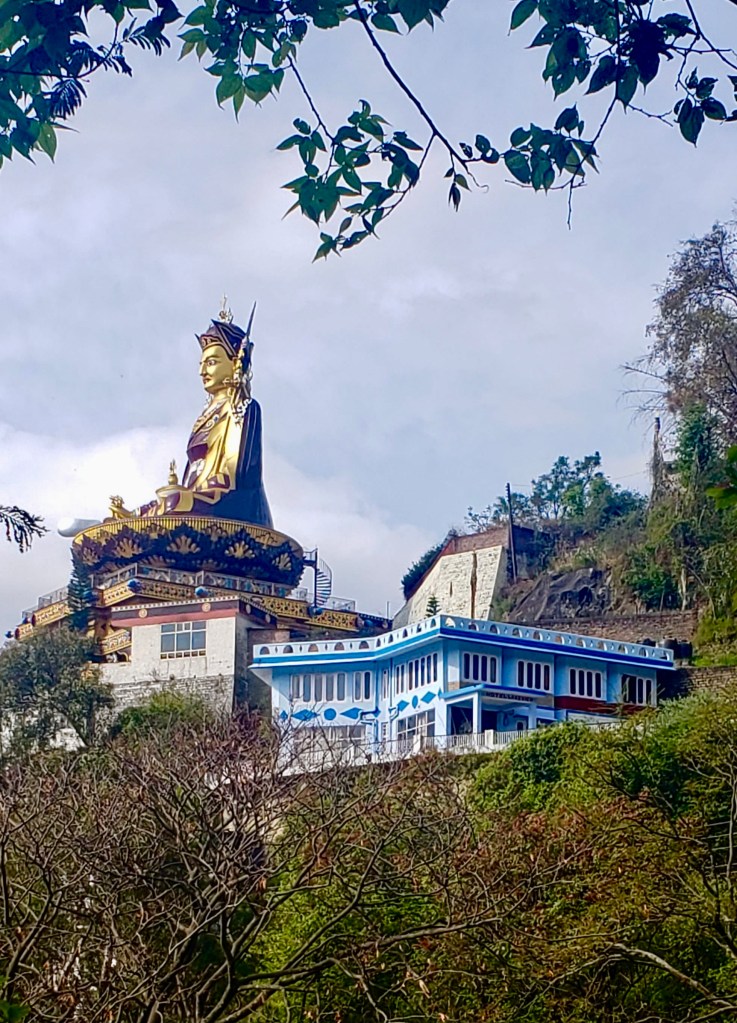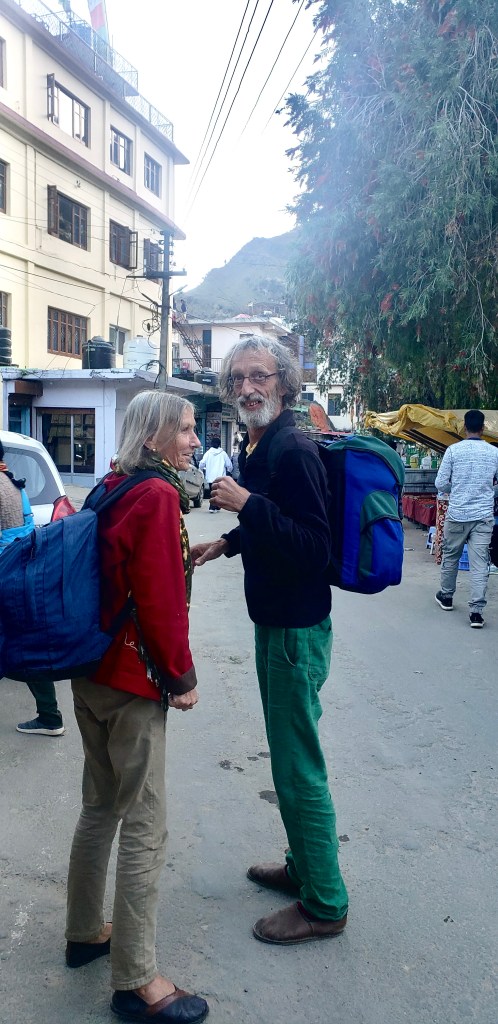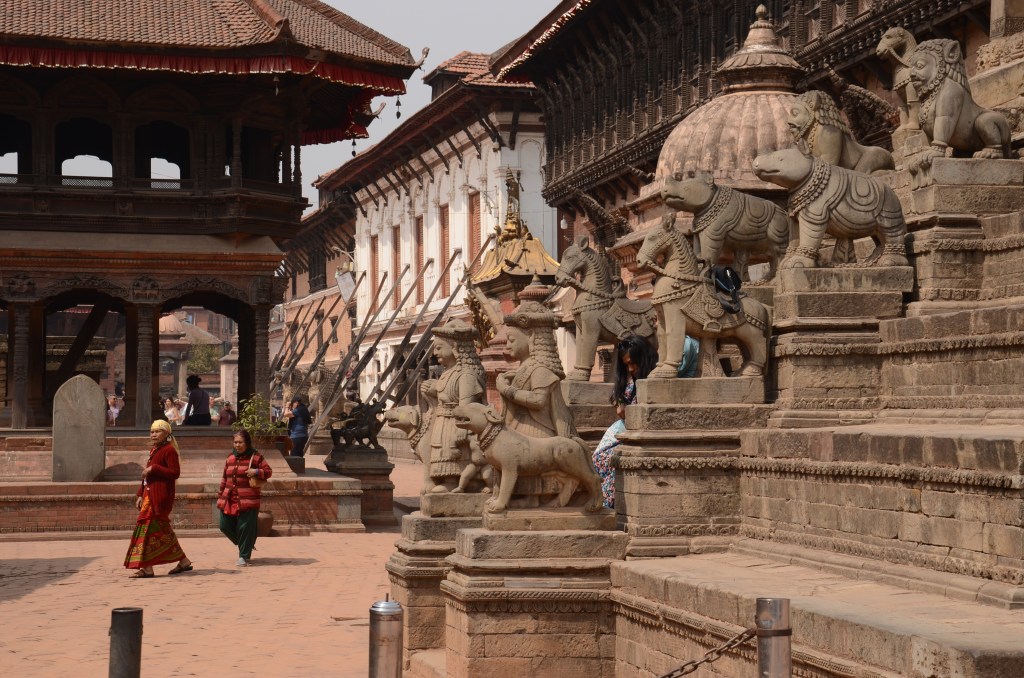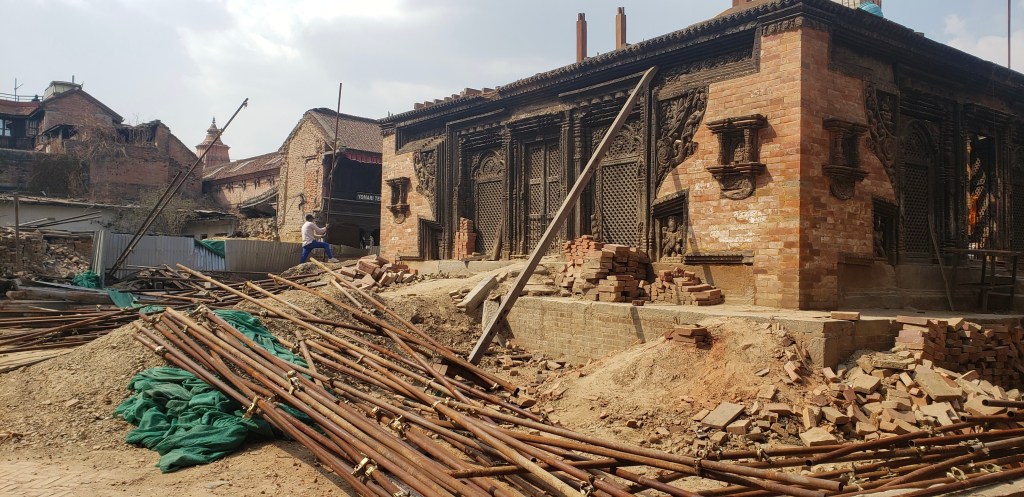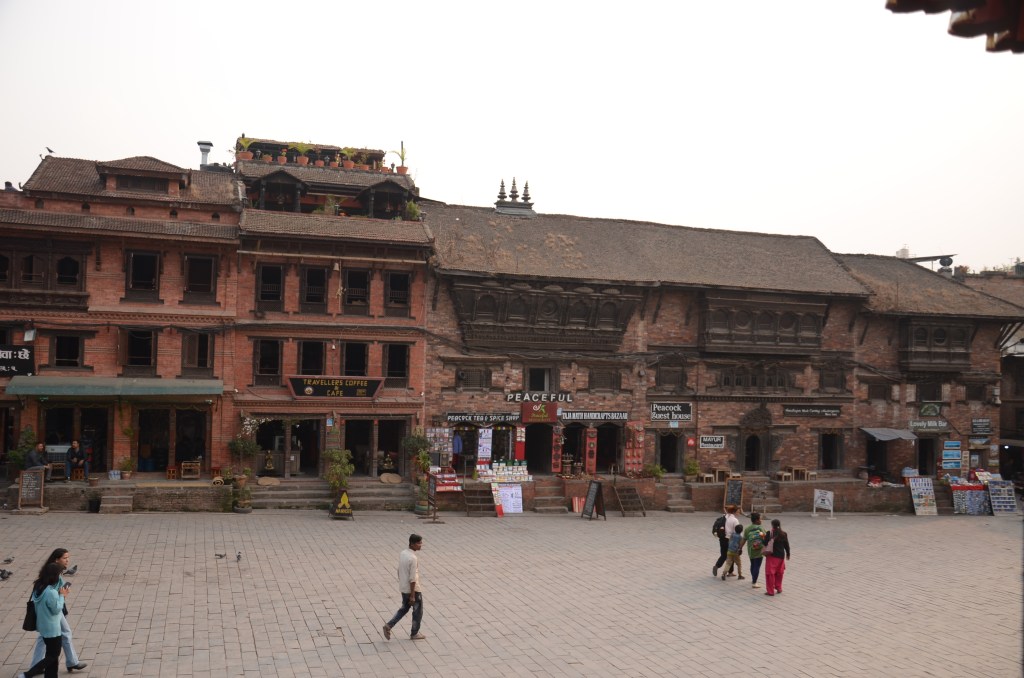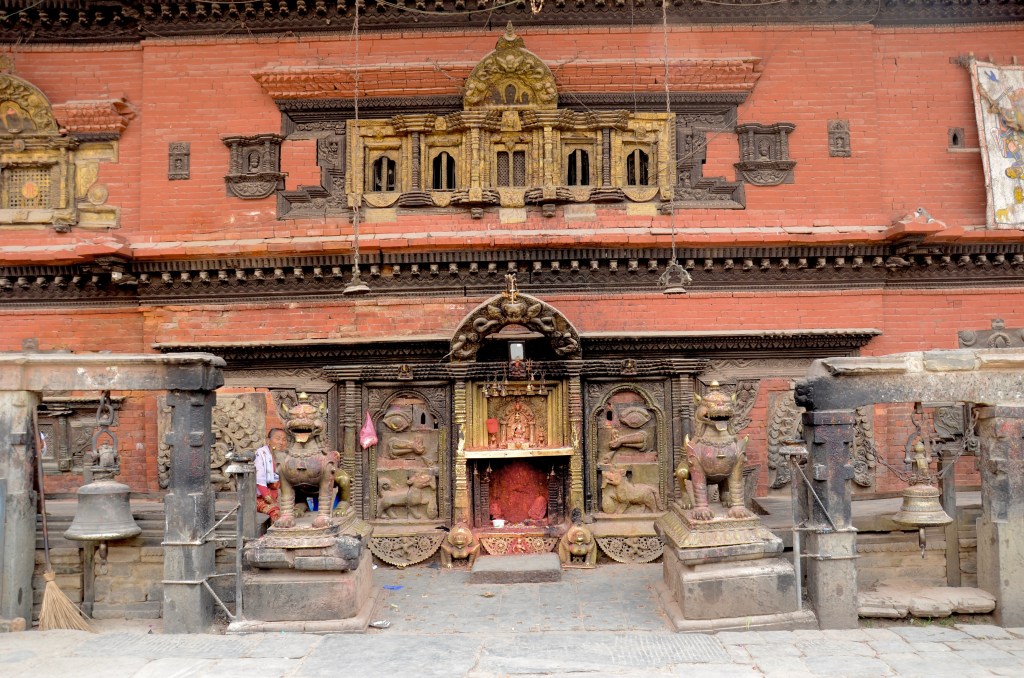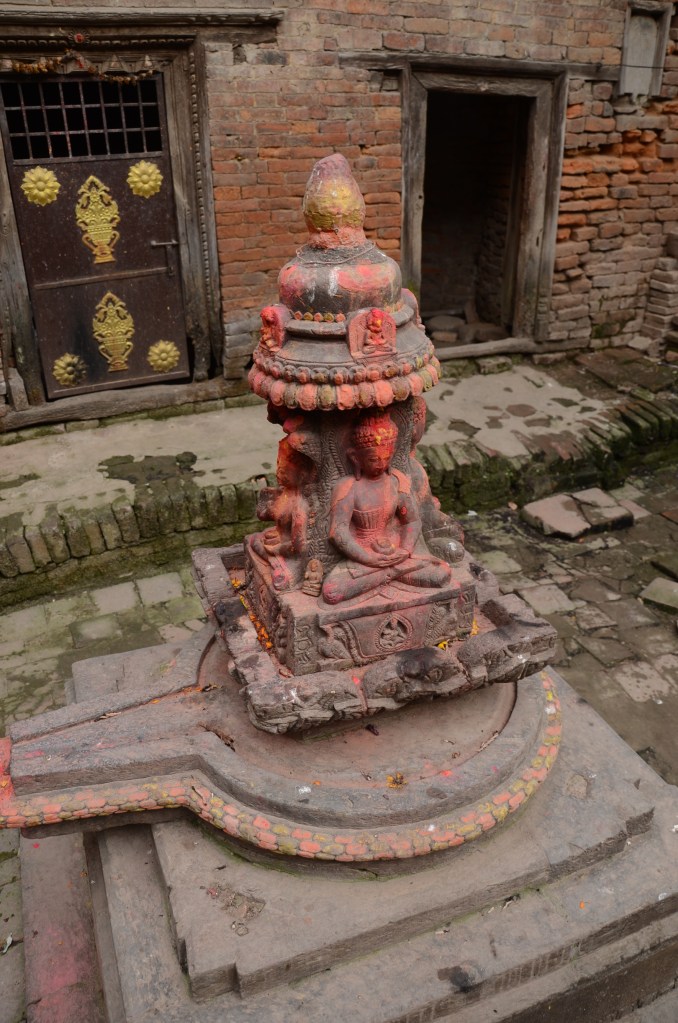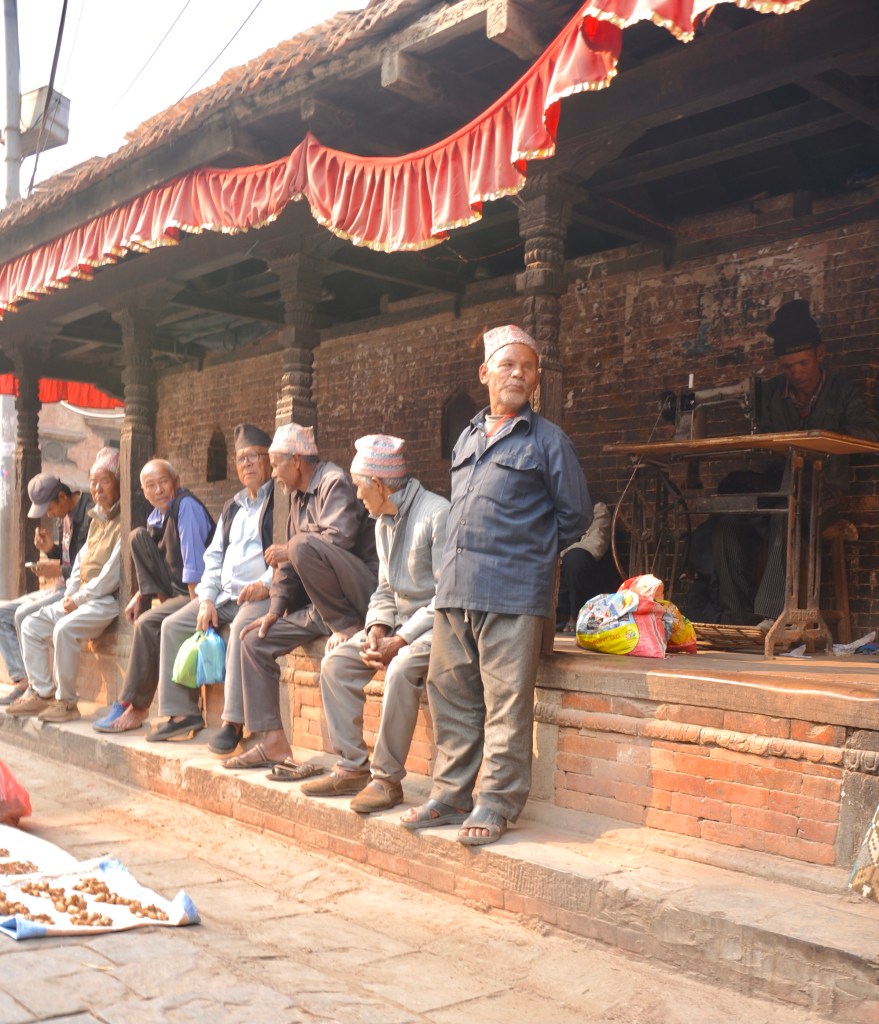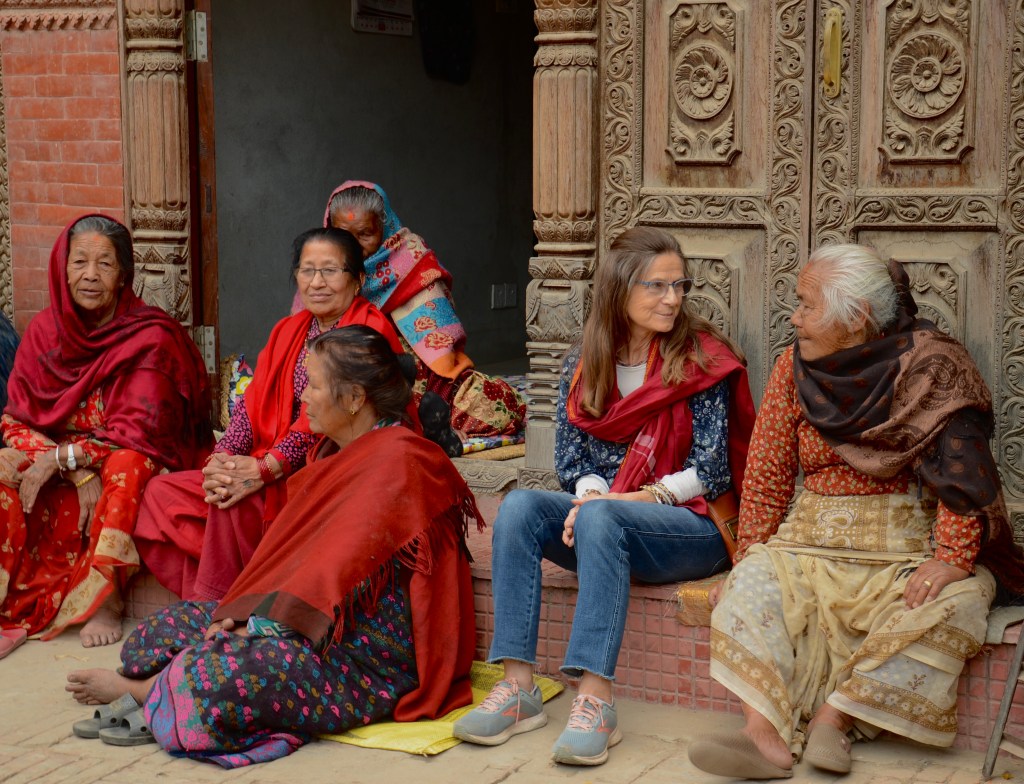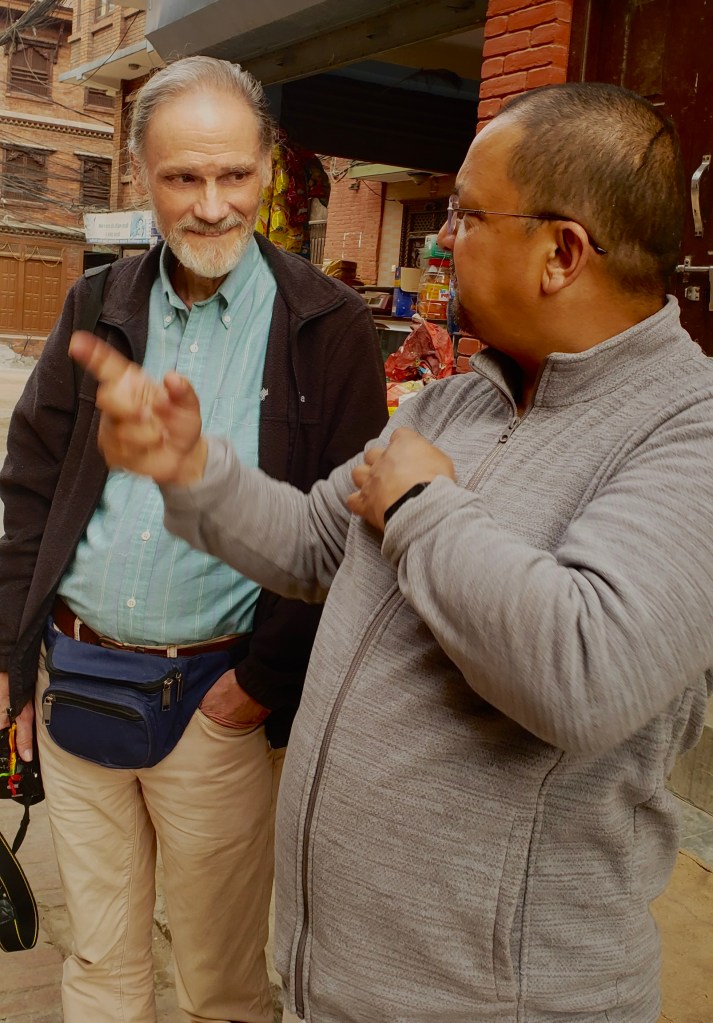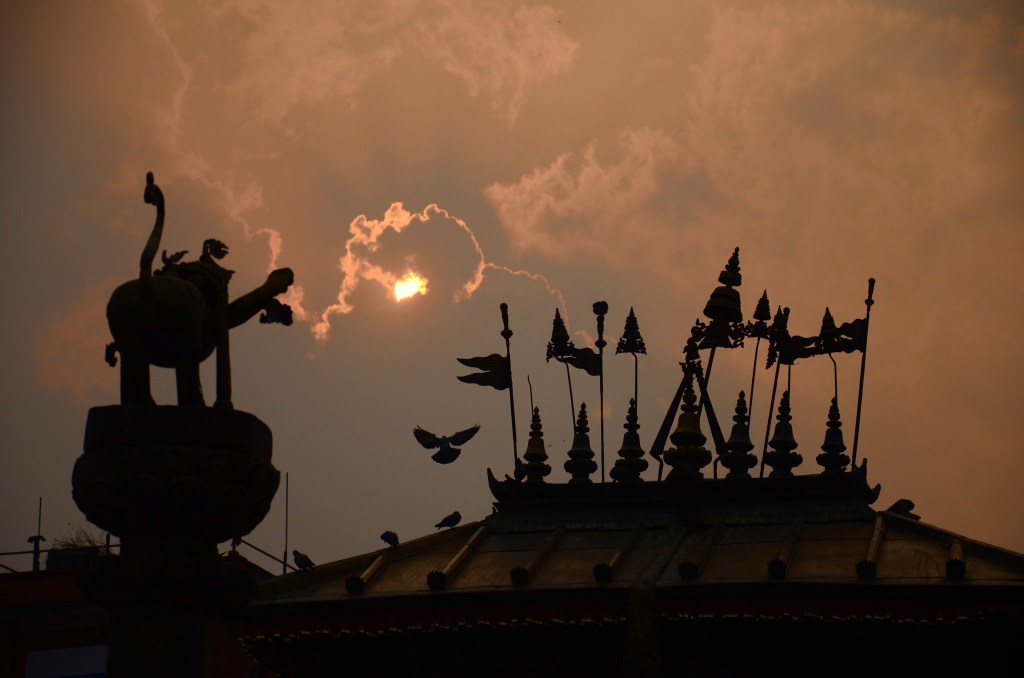The overnight bus ride from Delhi to Mandi was surprisingly smooth. A new bus left on time. We stopped for dinner at an all veg restaurant and arrived at 6.45 am. As we jostled our way up the hillside in the local bus, the sun rose and the mountains were clear. After Katmandu and then Delhi, the air felt unbelievably fresh and clean.

Our legs could no longer take the steep climb up to our previous lodging with its spectacular view of the town. Lakeview Guesthouse on the opposite side of Lotus Lake, and gave us an equally stunning view, with less effort. But as usual at this time of year, by noon the mountains get obscured by the rising mist from the valley obscuring the mountains. The guesthouse happens to sit beside the huge statue of the Buddhist Guru, Padmasambhava, who took Buddhism to Tibet and is recognized as the second Buddha. The statue was consecrated by the Dalai Lama in 2012.
The town has changed little. Some new building but mostly on the perimeter. As before, only a few westerners are here to practice Buddhism. We asked how it had been during covid. The locals gave it little recognition; lockdown was only two or three months, and very few were sick.

As we sat eating our aloo parathas (fried chapatis stuffed with mashed potatoes and spices) the small restaurant was filled with a cross section of this town: Tibetan Buddhists, Hindus, Sikhs–and ourselves. We can’t think of another place with such a diverse population, exemplifying that people actually can get along. Rewalsar’s spiritual significance for the Hindus is that the Pandavas from the Mahabharata supposedly came here; for the Sikhs, Guru Gobind Singh visited to consult with the king of nearby Mandi for support against the Mughal Emperor Aurangzeb. For the Buddhists there are several legends, one that Padmasambhava was burnt alive by the king of Mandi because his daughter was visiting the Guru for spiritual guidance. The spot where he was burned turned into Lotus Lake.

Our guest house owner invited us for lunch, and we sat in his room and talked over tea afterwards. He’s lived almost his whole life in Rewalsar. At 15 years old he asked his mother why she went to the temple. To worship Shiva, who will give you everything. This started him down the road of questioning who he was and why he was here. Now 66 years old, fit and healthy, dressed in spotless white Punjabi shirt and pants, he sat in yoga pose on his bed. Beside him was a small altar, including a picture of his Buddhist Master, the Hindu book of the Vedas lying beside it. He’s an interesting man, but the conversation became one sided. In fact, it wasn’t a conversation and after three hours we excused ourselves.
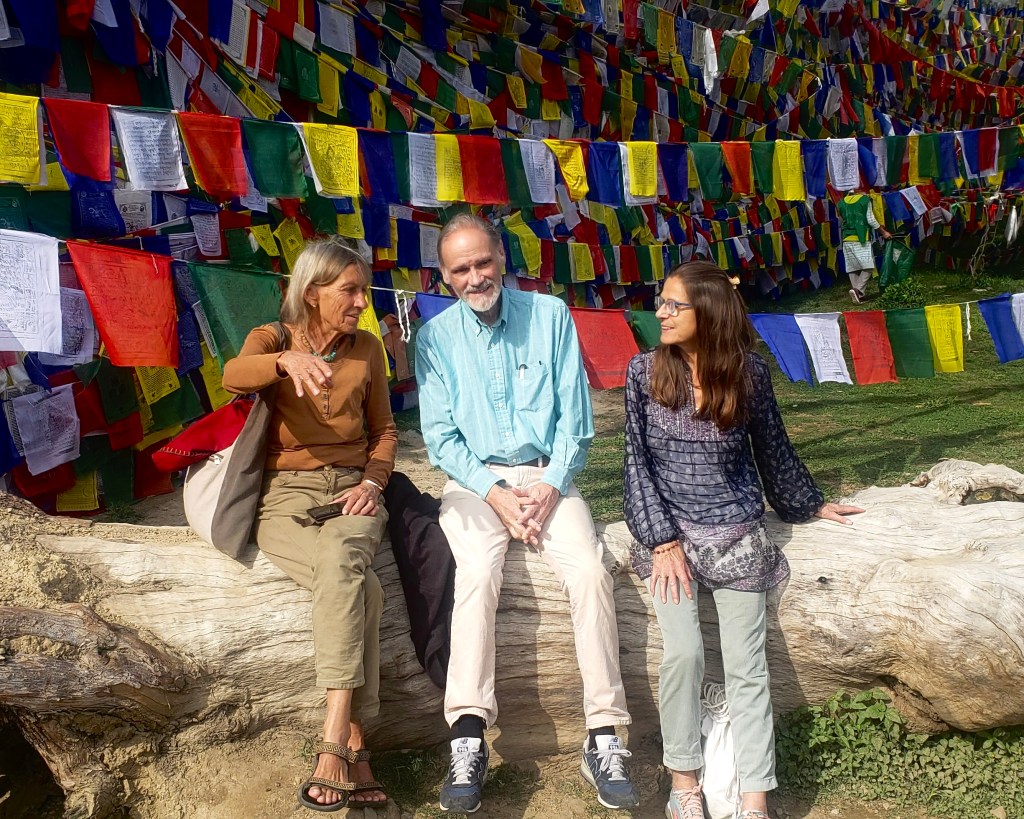
Our friends Marion and Juergen, were already here and as before, they took us hiking. We hadn’t walked as far since we accompanied them on a “walk” back in Gokarna. But this time it was a climb up the mountainside. We clambered up to a shrine where a wedding happened to be taking place. A band played, people danced for a short while and then it was all over. They got back in the cars and drove back down the mountain road.
Following them, we found a tea shop and were lucky to catch the local bus back to town. Just managing to wedge ourselves in, standing in the doorway and clinging on to anything available; it’s a clear indication of how many hill people depend on public transportation.
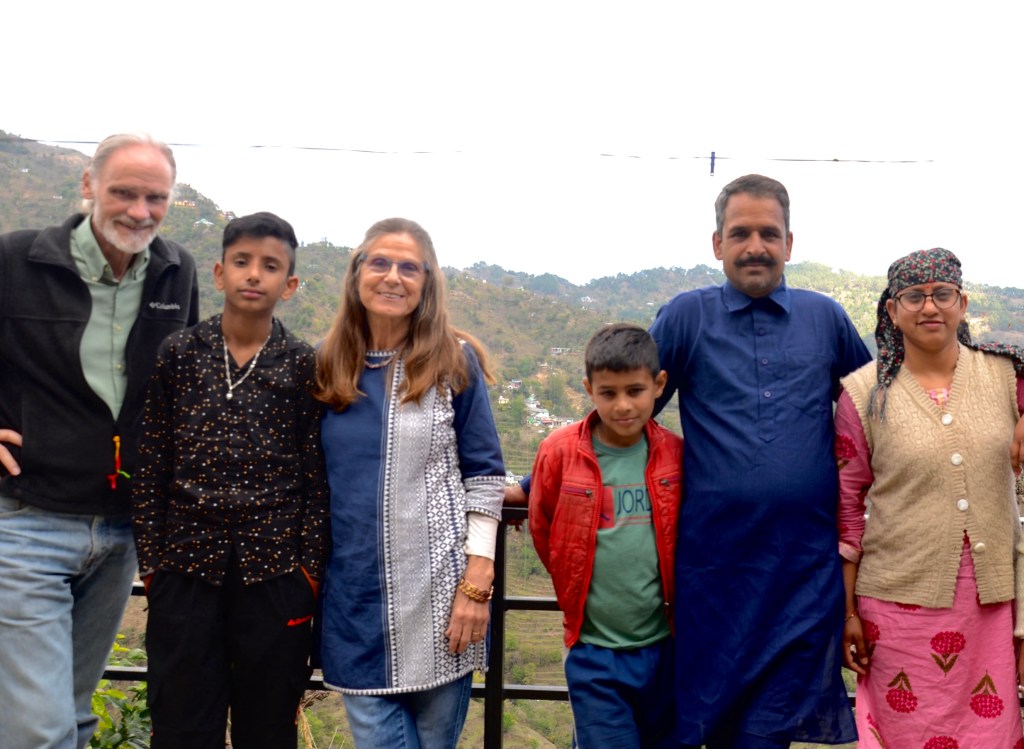
As in Varanasi, we’ve made lasting friends in Rewalsar; Sapna and her family from our first visit. On cold mornings we warmed ourselves in her little restaurant while she fed us parathas, her two young children, Prya and Priksu, watching TV before school. Today, we visited the family in the home her husband built with very little money. The progress made in the last four years impressed us. Outside of town and balanced on the hillside, it’s a steep climb down to the simple four rooms, little kitchen with an open cooking fire, outside toilet, a further climb down, challenging to my aging knees! Three sheep and two cows live below, and a docile German Shepherd fed on a pure veg diet. Indians do not pet their guard dogs and it was hard for us to refrain. Their balcony, afforded a panoramic view of the mountains and surrounding countryside of terraced fields. After lunch Sapna and her husband took at least two hours shearing their largest sheep.

To say the weather is changeable in the mountains is an understatement. This year it is especially unpredictable and days of sunshine have been interspersed with lots of rain. Without the sun to warm our room, the cold seeps in. We were glad to be invited to dinner by the taxi driver who for several years has driven us up to Nagar. We sat beside an electric heater, throwing off plenty of heat, and ate a delicious meal. In usual Indian fashion, instead of joining us, the family merely watched us eat.

A few days before we left, we took the bus up to Maha Naina Devi Temple an altitude of 1650 feet above the town (6,000 feet above sea level). The views of the Himalayas was unprecedented. Our legs felt the downhill walk back to town.

Two days before we moved on, Marion and Jurgen left for Delhi on their return to Germany. It was a sad farewell.

